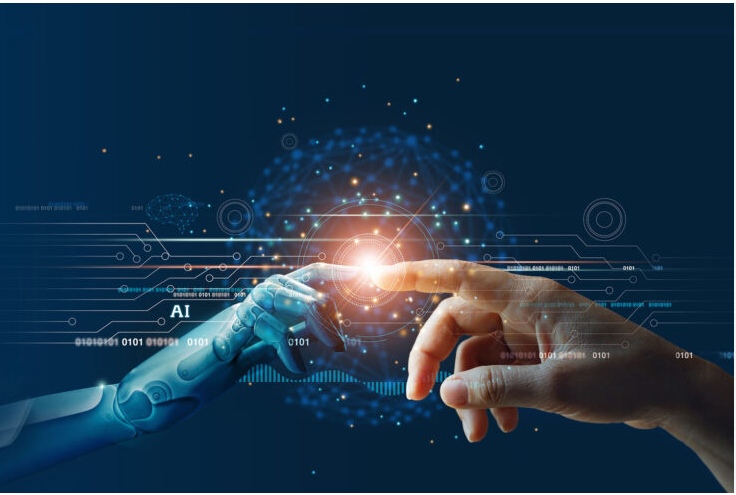
What Is AI
AI, or Artificial Intelligence, refers to the simulation of human intelligence in machines that are designed to perform tasks that typically require human cognition. This includes tasks such as perception, speech recognition, decision-making, and language translation, among others. AI technology can be broadly categorized into two types: narrow or weak AI, which is designed for a specific task, and general or strong AI, which has the ability to perform any intellectual task that a human being can. AI is implemented through the use of algorithms and statistical models that enable the machine to learn from data, improve its performance over time, and make decisions with minimal human intervention. The goal of AI research is to create systems that can perform tasks that would typically require human intelligence to complete.
Classification of AI
AI can be categorized into two which include:
1. Weak AI, also known as Narrow AI, is a type of Artificial Intelligence that is designed to perform specific, limited tasks. Unlike Strong AI, which has the potential to understand or learn any intellectual task that a human can, weak AI systems are programmed to perform specific tasks and do not have the ability to think, reason, or make decisions in a manner that is similar to that of a human. Examples of weak AI include virtual assistants like Siri or Alexa, which are designed to answer questions, play music, or control smart home devices. Other examples include self-driving cars, which use AI to perform specific tasks such as detecting objects and navigating roads, and recommendation systems, which use AI to suggest products or services based on a user’s history and preferences. Weak AI systems have the advantage of being more practical and widely applicable, as they can perform specific tasks more accurately and efficiently than humans. However, they are limited by the parameters set by their programming and do not have the ability to think or reason like a human. Despite these limitations, the development of weak AI is seen as an important step towards the development of Strong AI and is expected to play a critical role in shaping the future of a wide range of industries and fields.
2. Strong AI, also known as Artificial General Intelligence (AGI), is a type of Artificial Intelligence that is capable of understanding or learning any intellectual task that a human can. This means that strong AI systems have the ability to think, reason, and make decisions in a manner that is similar to that of a human. Strong AI has the potential to revolutionize the way we live and work, by performing tasks that are currently performed by humans, such as medical diagnosis, financial analysis, and scientific research. Unlike weak AI, which is designed to perform specific, limited tasks, strong AI has the potential to perform any intellectual task that a human can. However, the development of strong AI is still in its early stages and there are many technical, ethical, and societal challenges that must be overcome before it can be fully realized. Some experts also express concerns about the potential consequences of strong AI, such as job loss, privacy concerns, and the possibility of AI systems acting in ways that are harmful to humans. Despite these challenges, the development of strong AI is seen by many as a critical area of research, with the potential to bring about significant benefits and advances in a wide range of fields.
What is Automation
Automation refers to the use of technology, including software, hardware, and machines, to perform tasks that were previously performed by humans. Automation aims to increase efficiency, accuracy, and speed in various processes and operations and has the potential to improve quality, reduce costs, and increase productivity.
Examples of automation include assembly line robots in manufacturing, automated teller machines (ATMs) in banking, and self-driving cars in transportation. Automation can also be applied to a wide range of business processes, such as payroll and invoicing, customer service and support, and marketing and sales.
The use of automation in business has been increasing in recent years, driven by advancements in technology, the availability of data and analytics, and the need to remain competitive in a rapidly changing business environment. However, automation also has the potential to displace jobs and change the nature of work, and it is important for organizations to carefully consider the implications of automation and take a balanced approach that considers both the benefits and the potential risks.
Types of Automation
There are several types of automation, including:
1. Process Automation: This type of automation involves the use of technology to automate repetitive and routine tasks, such as data entry, invoicing, and payroll processing.
2. Robotic Process Automation (RPA): This type of automation involves the use of software robots to automate manual, repetitive tasks. RPA is typically used to automate back-office functions such as data entry, invoice processing, and customer service.
3. Workflow Automation: This type of automation involves the use of technology to automate business processes, such as the approval process for expenses or the onboarding process for new employees.
4. Rule-Based Automation: This type of automation involves the use of technology to automate decisions based on predetermined rules and conditions, such as fraud detection or credit scoring.
5. Artificial Intelligence Automation: This type of automation involves the use of AI and machine learning algorithms to automate tasks and processes, such as natural language processing, image recognition, and predictive analytics.
6. Cognitive Automation: This type of automation involves the use of AI and machine learning algorithms to automate tasks that require human-like thinking and decision-making, such as customer service and support, and medical diagnosis.
The type of automation used by a business will depend on its specific needs, the nature of the tasks being automated, and the available technology. The goal of automation is to improve efficiency, accuracy, and speed while reducing costs and increasing productivity.
Conclusion
Artificial Intelligence (AI) has become a game-changer in the business world. It has revolutionized the way businesses operate by automating various processes, freeing up human resources to focus on higher-level tasks. The integration of AI technology into business operations has allowed companies to optimize their operations and make better use of available resources, leading to increased efficiency, productivity, and competitiveness.
One of the key benefits of AI in business automation is increased efficiency. AI algorithms can automate repetitive tasks that are time-consuming and prone to human error, freeing up employees to focus on more complex and strategic tasks. This can lead to a reduction in the time and effort required to complete a task, leading to significant cost savings for the company. Additionally, AI-powered business automation systems can analyze large amounts of data and provide insights that can help organizations make better decisions.
Another benefit of AI in business automation is improved customer experience. AI-powered chatbots and customer service bots can provide instant and personalized responses to customer queries, helping to improve customer satisfaction and reduce response times. These systems can also provide customers with relevant information and recommendations, making it easier for them to find what they are looking for and complete transactions.
Moreover, AI can help businesses automate various tasks such as inventory management, invoicing, and accounting. This can lead to improved accuracy and reduced errors, as well as streamlined processes that are easier to manage. Additionally, AI-powered systems can identify patterns and trends in sales data, helping businesses to make informed decisions about inventory levels and product offerings.
However, while AI has the potential to significantly impact businesses, it is important to approach its integration into operations with caution. There are several challenges that businesses must overcome when integrating AI into their operations, including data privacy and security, ensuring accuracy and avoiding biases, and ensuring the ethical use of AI technology.
In terms of data privacy and security, AI systems need to be designed with appropriate security measures to ensure that sensitive business and customer information is protected from unauthorized access and misuse. Businesses must also ensure that their AI systems comply with relevant privacy regulations, such as the EU’s General Data Protection Regulation (GDPR).
Additionally, AI systems must be designed to minimize the risk of biases, as these can lead to inaccurate and unfair outcomes. To avoid these risks, businesses must ensure that the data used to train AI algorithms is diverse, representative, and free from biases. They must also have robust processes in place to monitor and assess the performance of AI systems and to make changes if necessary.
Finally, businesses must ensure that they use AI technology in an ethical and responsible manner. This includes considering the potential impact of AI on society and the workforce and taking steps to ensure that AI systems are designed and used in ways that are aligned with the values and principles of the organization.
In conclusion, the integration of AI into business operations has the potential to transform the way businesses operate, leading to increased efficiency, productivity, and competitiveness. However, businesses must approach this integration with caution, addressing the challenges posed by data privacy and security, biases, and ethical considerations. By doing so, businesses can maximize the benefits of AI in business automation, and ensure that this technology is used in ways that are beneficial for everyone.
